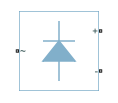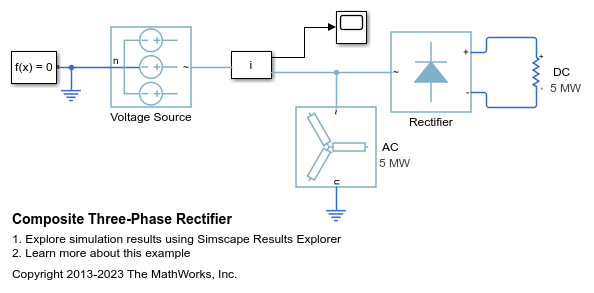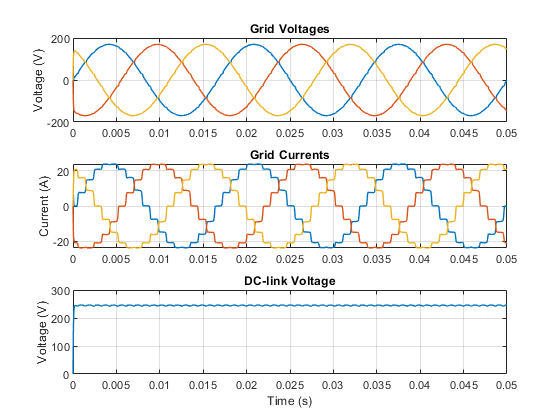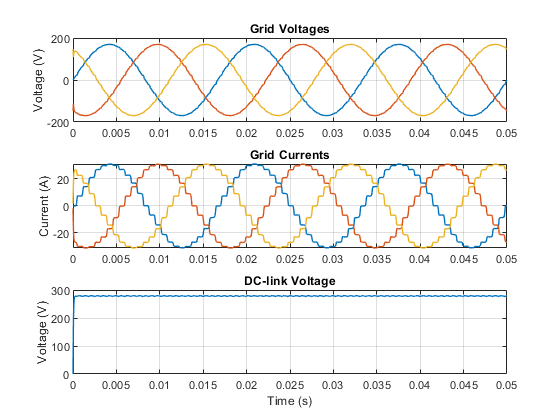Rectifier (Three-Phase)
Uncontrolled three-phase AC to DC voltage
Libraries:
Simscape /
Electrical /
Semiconductors & Converters /
Converters
Description
The Rectifier (Three-Phase) block models a three-arm diode bridge circuit that converts a three-phase AC voltage to a DC voltage. The figure shows the equivalent circuit for the three-arm diode bridge.
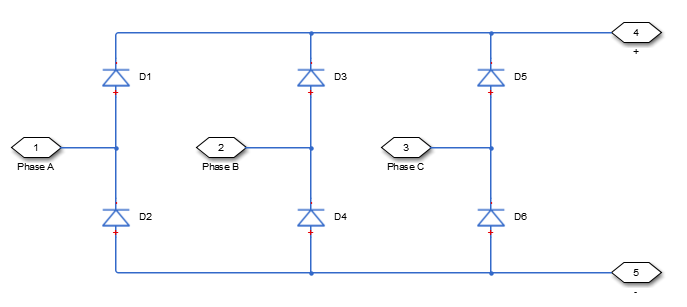
Using the Charge Dynamics tab of the block dialog box, you can choose the type of diode that the three-arm bridge circuit uses. The table shows you how to set the Model dynamics parameter based on your goals.
| Goal | Value to Select | Block Behavior |
|---|---|---|
| Prioritize simulation speed. | No dynamics | Each arm of the bridge circuit uses a copy of the Diode block. The block dialog box does not display additional parameters. |
| Precisely specify reverse-mode charge dynamics. | Model charge dynamics | Each arm of the bridge circuit uses a copy of the commutation model of the Diode block. The block dialog box shows parameters relating to the commutation model of the block. |
